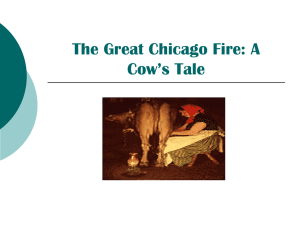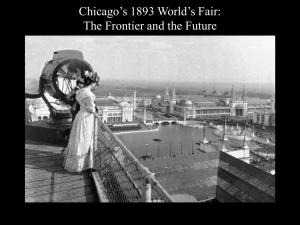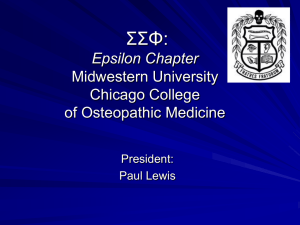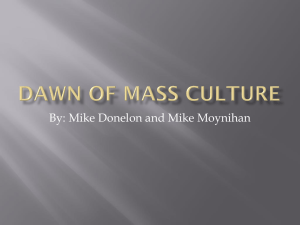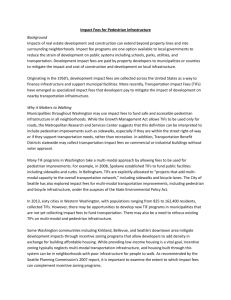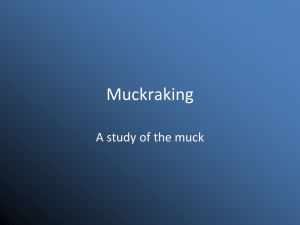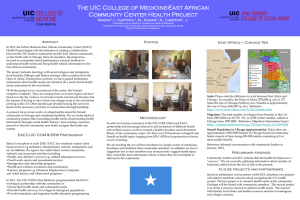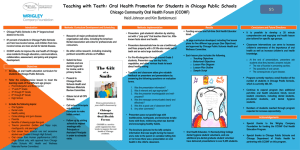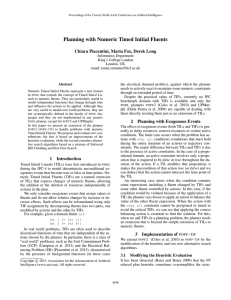Dean`s Challenge Chicago: Taxes & TIFs
advertisement
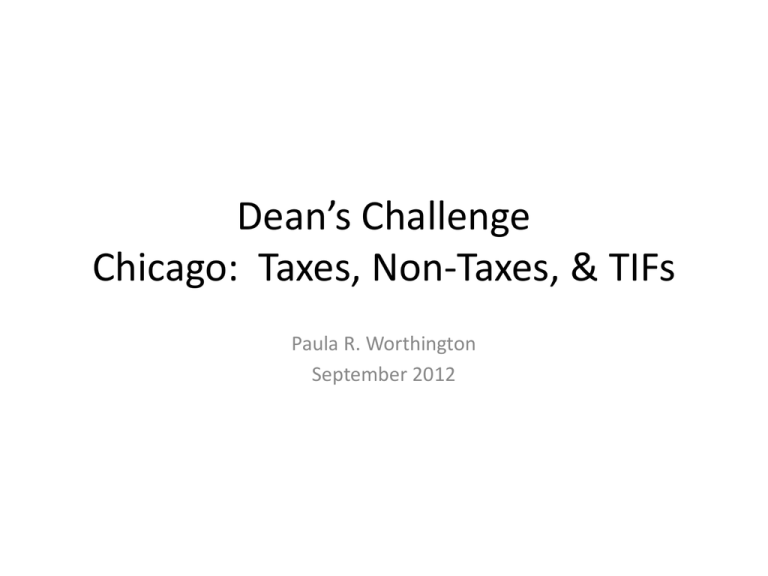
Dean’s Challenge Chicago: Taxes, Non-Taxes, & TIFs Paula R. Worthington September 2012 Outline • Overview: budget gaps, city revenues, measures of municipal financial health • City of Chicago – Funds & revenues – Taxes: sales, sin, property – TIFs – Pensions • Resources: IG, Civic Fed, Pew, Lincoln Inst Big picture: budget gap improving Chicago worse off than other cities Sources of revenue for local governments—cities alone would be somewhat different—more sales and gross receipts taxes, less IG transfers City Revenues Still Falling Nationwide Cities & other local governments “squeezed” by declines in own-source & state revenue States have their own budget woes…. Many cities have raised fees Fund balances may have hit bottom Civic Federation Project • Financial indicators for 13 large US cities – Fund balance ratio, debt service ratio, etc. • Chicago in bottom ½ or 1/3 of group • Doesn’t even include liabilities from underfunded pensions and other postemployment benefits • Data through FY2010 shows little improvement, though FY 2011 may be better Turning to City of Chicago.... • What are revenue options? • What limits does city face? – Legal – Political – Economic • Mobility of residents, jobs, and capital • Elasticites! Where does Chicago get its money? Several years of “one-off” revenues… Where did one-shot $ come from? Asset lease funds practically empty…. Taxes I: Can Chicago raise its sales tax? City expects $560 million in FY2012 Why not tax services as well as goods? Illinois taxes few services, and Chicago uses same sales tax base….. Why not raise “sin” taxes? What about property taxes? • Remember…..property owners pay taxes to many jurisdictions, not just the City! • Other jurisdictions include – Chicago Public Schools – Cook County – Chicago Park District – Metropolitan Water Reclamation District City uses property taxes to cover debt services & pension contributions Full “burden” of City property tax shows through as levy, TIFs, and library levy Why not go after nonprofits? • Currently exempt from paying property taxes • Litigation on-going related to health organizations (e.g., hospitals) and tax-exempt status • Other options – PILOTs – User fees and charges for city services provided Chicago water & sewer rates are currently subsidized for nonprofit property owners….. What about PILOTs? • Payments in Lieu of Property Taxes • “Voluntary”, infrequently used, and contentious • Don’t typically generate huge $ (less than 1% of general revenues) • Urban Inst-Brookings Tax Policy Center & Lincoln Institute of Land Policy are resources Time to talk about TIFs! Lots of money: over $500 mil! How do TIFs work? TIFs widely used in Chicago and suburban Cook County TIFs can raise tax rates….. Do TIFs Generate Economic Development? How are TIF funds spent? TIF funds be “ported” between TIFs on a limited basis Bottom line on TIFs? • Act as a somewhat opaque way of raising property taxes and directing more $ towards specific local economic development projects • Reforms are coming, but system seems likely to remain in place for near future What about pensions? Chicago’s four city plans are underfunded Sources of underfunding….. New state law forces city to “up” its funding to attain 90% funding by 2040 Resources? • Inspector General http://chicagoinspectorgeneral.org/majorinitiatives/budget-options/ • Civic Federation http://www.civicfed.org/ • Pew Center http://www.pewstates.org/projects/americancities-project-328139 • Lincoln Institute http://www.lincolninst.edu/
